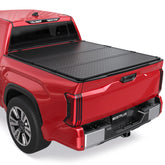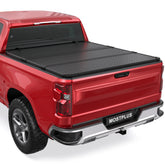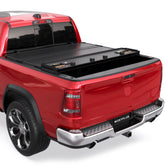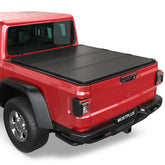How to change a fuel filter?
The fuel filter, whether it's for a gasoline or diesel engine, plays a key role, but you can't ignore its maintenance. Is your air filter faulty? We'll show you step-by-step how to change it yourself. You don't have to be an expert mechanic to change your fuel filter quickly! We recommend that you follow the steps below.
Why change your fuel filter?
The buildup of contaminants in the fuel system will affect the performance of your engine. Replacing your fuel filter is important because it:
- Prevents foreign particles from clogging your engine.
- Fuel filters can interfere with engine operation (lean mixture), resulting in reduced performance and erratic running.
- Clean filters conserve the amount of fuel you need.
That's why it's important to change this filter regularly to preserve engine components. It also prevents water from mixing with the fuel and causing serious damage to your engine.

When should I change my fuel filter?
In general, you should change your fuel filter every two service intervals, which is between 40,000 and 60,000 km, or between 2 and 4 years.
On diesel engines, water is drained from the diesel circuit each time the fuel filter is changed. On some vehicles, a warning light alerts the driver if there is too much water in the fuel filter. However, it is recommended that the fuel filter be bled annually to prevent water damage to the diesel injection system.
For gasoline engines, the filter is typically integrated into the fuel pump/dipstick assembly and does not need to be changed.
How to change a fuel filter?
Step 1: Prepare materials
- Appropriately sized flare nut wrench
- Fuel line disconnect tool
- A pair of pliers
- Protective gloves
- Safety glasses
- Screwdriver
- Appropriate size wrench
Step 2: Locate the fuel filter.
The fuel filter is usually located under the vehicle, on the frame rail, or in the engine compartment near the firewall.
Step 3: Remove the fuel cap.
Remove the fuel cap to release pressure from the fuel system.
Step 4: Disconnect the fuel lines.
Remove the fuel lines from the strainer. Place a wrench on the fuel filter connector and a wrench on the fuel line connector. While holding the filter with the other wrench, turn the fuel line fitting counterclockwise.
Step 5: Remove the mounting brackets from the fuel filter retainer.
Loosen and remove the fuel filter mounting brackets using a ratchet wrench and an appropriately sized socket wrench.

Step 6: Remove the fuel filter.
Once the fasteners have been removed and the fuel filter retainer has been loosened, slide the fuel filter out of the retainer. Discard the old filter.
Step 7: Install the new fuel filter.
Slide the new filter into the mounting bracket.
Step 8: Install the fuel filter mounting brackets.
Loosely install the bracket mounting fasteners by hand. Tighten until secure using a ratchet wrench and an appropriately sized socket wrench.
Step 9: Reinstall the fuel lines.
Thread the fuel lines by hand. Place a wrench on the fuel filter fitting and a flare nut wrench on the fuel line fitting. Turn the fuel line fitting clockwise until tight while holding the filter with the other wrench.
Step 10: Reinstall the fuel filler cap.
Replace it now so you don't forget to do so before driving the vehicle.
Step 11: Test the vehicle.
Start the car and check for leaks. If you find any, recheck the fuel filter, fuel lines, and all connections to make sure everything is secure.

How difficult is it to change a fuel filter on a vehicle?
Changing a fuel filter is a simple operation that anyone can perform. However, the location of the fuel filter can complicate the operation: on a gasoline engine, under the vehicle, between the fuel tank and the engine; on modern diesel engines, access is limited due to the presence of elements that impede access (air filter housing, cylinder head cover, behind a wheel arch...).
When the fuel filter is replaced, air is introduced into the injection circuit, causing starting difficulties. On some vehicles, simply turning on the ignition a few times is enough to activate the fuel pump and pressurize the injection system. On other vehicles, a manual pump ("priming bulb") is required to prime the fuel circuit and facilitate engine restart. Finally, in rare cases, vehicles may require a diagnostic tool to deliver fuel to the injection system.
Featured Products
- $479.99
$499.99- $479.99
- Unit price
- / per
- $549.99
$549.99- $549.99
- Unit price
- / per
- $489.99
- $489.99
- Unit price
- / per
- $469.99
$489.67- $469.99
- Unit price
- / per














